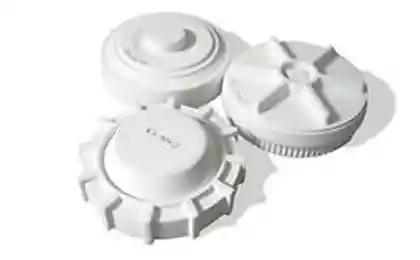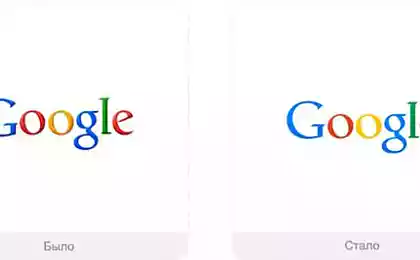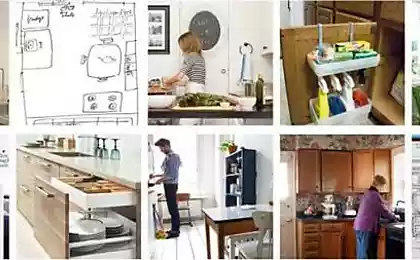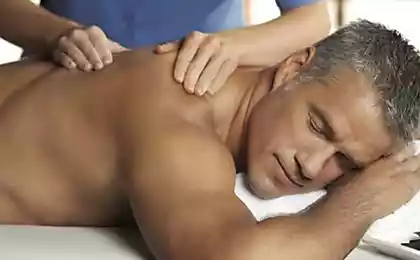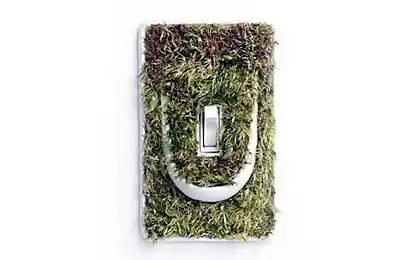775
Healthy home: a space that contributes to the health and well-being
Healthy home is an innovative approach to the organization of the living environment or workplace. The main value of the house for living in it — not flashy facade, and the space that contributes to the health and well-being. Where we live and work has a significant impact on our health and well-being.
Some spaces make us feel full of energy, while others do make them painful. Environment can shape our habits and preferences, to regulate the cycle of sleep-Wake, lead us to healthy or unhealthy choices, and passively affects our health.
Even the color and texture of the walls can affect whether we feel energetic and focused throughout the day or lethargic and scattered. The causes of many diseases lie not so much in humans as in his place of residence. Our place of residence can help us stay healthy and provide a better quality of life.
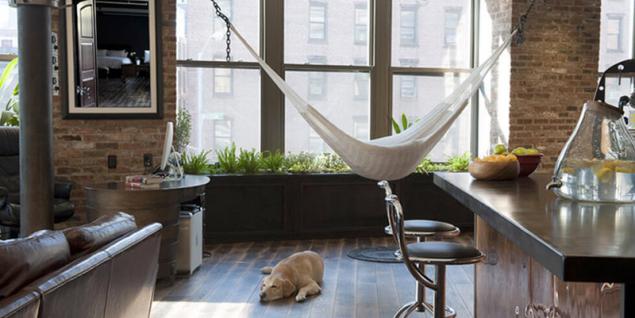
A healthy home uses the existing relationship between people and buildings, and the consequences of finding them for our health as residents, to create spaces that actively contribute to human health, performance and well-being. When our habitat, the place where we live, work or spend leisure time actively or passively promotes our health and well-being, is the integration of Wellness with the design.
Healthy house considers the environment as an asset, which can maximize the human potential and strives to create an environment that encourages us to live better by cultivating healthy lifestyle and help prevent health problems. For people who spend most of their time indoors, a healthy home is, in a sense, is a form of prevention, therapy and rehabilitation. Healthy house incorporates design elements, layout, facilities and functions that improve nutrition, physical fitness, mood, sleep, productivity, and stimulate the vitality of its inhabitants. Spaces that enrich our life and create ease of movement throughout the day.
Basically the approaches to the construction of buildings focused on environmental sustainability (sustainability) and efficiency of energy utilization (energy saving), which are important for ensuring our future. When we think about eco-friendly house, the first thing that comes to mind is the toxicity of the housing. Healthy home takes into account the toxicity of building materials, especially interior finishes, furniture materials and other items with which residents are in direct contact.
However, there is a need to go beyond environmental issues and include in the design of buildings principles of Wellness such as physical fitness, healthy eating, mental and emotional health to maintain a healthy lifestyle. Healthy home expands the scope of ecological sustainability is an integrated solution that meets the complete human sustainability. Design a healthy home allows you to combine Wellness with sustainability, creating buildings that reduce environmental impact and improve the quality of human life.
The goal of healthy homes is to provide tenants a space that supports the body and mind. For example, the promotion of sleep is rarely a part of green building, but the opportunity to have a really good sleep is important for our health. And the places where we live and work, affect the quality of our sleep. The idea of using natural daylight to save energy is not new, but a healthy house is also mindful of its impact on improving sleep and performance in daytime. The wavelength of light used to illuminate our offices during the day can lead to insomnia at night.

There are a number of design features of the bedrooms, which provide much more favourable sleeping conditions. For example, the circadian lighting system will emit the light to intensify in the morning and melatonin-enhancing light in the evening (light therapy).
Design of staircases can predispose us to walk, which is useful for the body and saves energy, or to use an Elevator, which reduces our activity and increases the cost of electricity.
One of the strongest trends in the design of buildings — the relationship with nature. Many people attached great importance to the views and capabilities is outdoors. The merging of interior with the environment has a strong Wellness aspect. A healthy home brings a person closer to nature, its rhythms of life, thereby being a factor of recovery.
Improving the health and well-being of people by constructing the living environment is the center of attention
WELL Building Standard
WELL Building Standard is a modern standard for the design and construction of buildings. Standard locates in the center of design and constructive solutions to the health and well-being of the inhabitants. The goal is to improve the quality of life of the inhabitants by developing spaces that enhance their health. The standard focuses on the quality of indoor air, lighting, physical comfort, and psychological impacts within the space of the house. WELL Building Standard covers seven factors affecting health and wellbeing: air, water, food, light, fitness, comfort and mind.
Air: achieving optimal air quality in the room.
Good air quality is mandatory for a healthy environment. An adult inhales from 6 to 10 liters of air every minute, every day through the lungs of a moderately active adult is held about 15 cubic meters of air. Dust, mold spores, pollen, bacteria, smoke and other particles that can cause health problems, get into the air from natural and anthropogenic sources. Poor air quality causes a decrease in productivity, headaches, fatigue and irritation. Fresh and clean indoor air provides significant benefits for the wellbeing of the inhabitants.
WELL Building Standard provides the following solutions and technologies:
— air purification from allergens, pollutants and particles;
— treatment of air with ultraviolet light, ionization of the air;
— good air circulation and air distribution;
— control of smell provides aromatherapy to create a relaxing and mood enhancing atmosphere;
— the use of cedar in furniture, clay (limestone) plaster and other elements that improve air quality;
— minimization of the sources of toxins or pathogens in construction materials, furniture, detergents, and other items inside buildings.
Water: achieving the highest quality water while ensuring availability for users and to prevent dehydration.
Water is the most important mechanism of the human body and makes up more than two-thirds of the weight of the human body. The functioning of all cells and organs of our body depend on water. Water serves as lubricant in digestion and other processes in the body, regulates body temperature, removes harmful toxins and transportorul valuable nutrients to body cells. Proper hydration and replenishment of key electrolytes and minerals is important for performance, sustain energy levels and reduce fatigue. Water promotes weight loss, moisturizes and nourishes the skin from within.
WELL Building Standard provides the following solutions and technologies:
— removal of pathogenic organisms, including bacteria and viruses;
— removal of sediment and heavy metals;
— use for drinking pure water, natural mineral composition;
— removal of organic contaminants, residual chlorine and other disinfectants;
— optimal placement and accessibility of water for proper hydration of the body;
— proper arrangements for storage of water.
Nutrition: encourage healthy eating habits by providing healthier choices.
Most people have a high-calorie diet and consume large quantities of fat and sugar, which gradually weaken the immune system and lead to excessive weight and cause chronic illness. A decrease in the availability of unhealthy foods, ease of access to useful products, changing unhealthy eating habits (overeating, exhausting diets) are essential steps in maintaining food culture.
WELL Building Standard provides the following solutions and technologies:
— ergonomic design space kitchen/dining room, contributing to facilities in the preparation and consumption of food;
— the use of non-porous surfaces of tables and countertops to minimize contamination and growth of bacteria;
— the ability to grow fresh and organic food;
— placing shops with dietary products in the building;
— menus and recipes that are relevant to a healthy diet;
— kitchen and Cutlery and cooking methods to maximise nutritional value and antioxidant capacity of food;
— addition of power fitoterapia.
Light: provide lighting that minimizes disturbances in the circadian rhythm of the body and provide the perfect lighting levels for different tasks.
Circadian rhythms — a biological process tied to the daily cycle, which is controlled by environmental signals, the most important of which is daylight. The human body uses light to regulate a variety of biological processes throughout the day. Due to the fact that artificial light in the interior is static — does not change a length of the waves or the intensity from dawn to dusk — the circadian system of the body gets the wrong signals. In addition, disrupting the circadian rhythm, bright light at night signals the body to stop producing melatonin, the sleep hormone. Low production of melatonin decreases sleep quality and increases the risk of obesity. The lack of exposure to natural light has a deleterious effect on the quality of sleep, level of alertness, emotional state and overall health and well-being.
WELL Building Standard provides the following solutions and technologies:
— circadian lighting control, tuning the spectrum and intensity throughout the day to promote sleep, wakefulness, and digestion;
— dawn simulation — gradually increasing light allows residents to experience a more natural way to Wake;
night lights in hallways and bathrooms, designed for transition to sleep and sufficient night lighting for movement, without disturbing the sleep mode;
— adequate daylight in the daytime and shielding the Windows at night to eliminate external light, to improve the quality of sleep;
— energizing light in the morning to help fast awakening to increase alertness in the morning and reduced levels of melatonin;
— optimal lighting to increase productivity and reduce eye strain;
— optimization of ultraviolet light allows the body to create vitamin D and to avoid harm to eyes and skin.
Fitness: the creation of numerous opportunities for physical activity and exercise.
Physical activity is one of the main pillars of health. Fitness improves
strength, endurance and flexibility, improves cardiovascular function, promotes the growth of nerve cells, helps maintain a healthy body weight, reduces stress and has an antidepressant effect. Today, a sedentary lifestyle is one of the biggest threats to the health of the population. People constantly cite lack of time as main reasons why they do not train. To solve this problem in an architectural environment are introduced fitness elements to integrate physical activity into everyday life. Giving you access to multiple possibilities of fitness, and setting a high intensity workout, supported and promoted an active lifestyle.
WELL Building Standard provides the following solutions and technologies:
— sufficient space for placement of equipment;
room or yoga;
— choice of living near a cycle path or Park, allows for cardio training;
— choice of place of residence along with other opportunities for fitness, for example swimming;
— attractive design of the stairs has to walk instead of using the Elevator;
— accommodation in design elements that encourage fitness;
gadgets and mobile apps for fitness and Wellness.
Comfort: the creation of a favorable climate and atmosphere in the house that allows residents to experience the comfort, both physical and mental.
On the feeling of comfort is influenced by many environmental factors. Discomfort appears because of the awkward posture, noise, heat or cold, drafty, cramped space, lack of privacy etc. Unwanted noise can cause distraction, sleep disturbance, or simply irritation that interrupts the rest or work. Comfort not only affects our ability to relax, but also to the ability to concentrate and be productive. Good design takes a holistic approach, which takes into account factors such as ergonomics, microclimate, acoustics, hygiene, and even electromagnetic fields.
WELL Building Standard provides the following solutions and technologies:
— noise protection includes walls, doors and Windows, which shield the external noises and reduce the sound and vibration from water and devices that are inside of buildings;
— application in the design of technologies that contribute to maintaining wholesome indoor climate, prevent drafts;
— minimize electromagnetic radiation, shielding of electrical cables;
— use of building materials that do not contribute to the appearance of mold, bacterial growth, viruses and other pathogens and minimize the spread of germs;
— floors should have a texture that ensures horoshee grip sole;
device Spa area including a sauna, petermannia shower, floor heat reflexology for the feet, etc.;
— mattress and pillow from organic plant material and organic essential oils, providing a comfortable position for sleep, improved blood circulation and deep sleep;
— good ergonomics of the workplace.
Psyche: the achievement and enrichment of mental and emotional well-being.
Concentration of mind and emotional balance can be influenced by external environmental factors, including excessive heat or cold, noise, pollution, and lack of sleep or food. Your attention, concentration, memory and other mental abilities significantly depend on these factors. The purpose of the WELL Building Standard is the construction of buildings, which help to optimize brain function. The idea is that there is an instinctive bond between people and nature, and that this is the natural unity allows a person to be more relaxed and calm in the presence of nature. The introduction of elements of the natural world in interior design, helps to create a space that calms the mind and reduces stress. Similar can be the impact of interior design.
WELL Building Standard provides the following solutions and technologies:
— panoramic Windows and a good window view;
— application in interior design, plants, installation of greenhouses;
— landscaping of the adjacent territory, for a garden;
— the placement of objects of fine art;
device space for relaxation, for example, terraces or verandahs;
device is the special place for tea.
Healthy home offers a perspective based on possibilities and potential of buildings, focused on Wellness to both actively and passively to maintain and strengthen the health, well-being and vitality of the inhabitants. published
Source: wellnesspraxis.com/zdorovy-dom-integracia-wellness-dizayn/
Some spaces make us feel full of energy, while others do make them painful. Environment can shape our habits and preferences, to regulate the cycle of sleep-Wake, lead us to healthy or unhealthy choices, and passively affects our health.
Even the color and texture of the walls can affect whether we feel energetic and focused throughout the day or lethargic and scattered. The causes of many diseases lie not so much in humans as in his place of residence. Our place of residence can help us stay healthy and provide a better quality of life.

A healthy home uses the existing relationship between people and buildings, and the consequences of finding them for our health as residents, to create spaces that actively contribute to human health, performance and well-being. When our habitat, the place where we live, work or spend leisure time actively or passively promotes our health and well-being, is the integration of Wellness with the design.
Healthy house considers the environment as an asset, which can maximize the human potential and strives to create an environment that encourages us to live better by cultivating healthy lifestyle and help prevent health problems. For people who spend most of their time indoors, a healthy home is, in a sense, is a form of prevention, therapy and rehabilitation. Healthy house incorporates design elements, layout, facilities and functions that improve nutrition, physical fitness, mood, sleep, productivity, and stimulate the vitality of its inhabitants. Spaces that enrich our life and create ease of movement throughout the day.
Basically the approaches to the construction of buildings focused on environmental sustainability (sustainability) and efficiency of energy utilization (energy saving), which are important for ensuring our future. When we think about eco-friendly house, the first thing that comes to mind is the toxicity of the housing. Healthy home takes into account the toxicity of building materials, especially interior finishes, furniture materials and other items with which residents are in direct contact.
However, there is a need to go beyond environmental issues and include in the design of buildings principles of Wellness such as physical fitness, healthy eating, mental and emotional health to maintain a healthy lifestyle. Healthy home expands the scope of ecological sustainability is an integrated solution that meets the complete human sustainability. Design a healthy home allows you to combine Wellness with sustainability, creating buildings that reduce environmental impact and improve the quality of human life.
The goal of healthy homes is to provide tenants a space that supports the body and mind. For example, the promotion of sleep is rarely a part of green building, but the opportunity to have a really good sleep is important for our health. And the places where we live and work, affect the quality of our sleep. The idea of using natural daylight to save energy is not new, but a healthy house is also mindful of its impact on improving sleep and performance in daytime. The wavelength of light used to illuminate our offices during the day can lead to insomnia at night.

There are a number of design features of the bedrooms, which provide much more favourable sleeping conditions. For example, the circadian lighting system will emit the light to intensify in the morning and melatonin-enhancing light in the evening (light therapy).
Design of staircases can predispose us to walk, which is useful for the body and saves energy, or to use an Elevator, which reduces our activity and increases the cost of electricity.
One of the strongest trends in the design of buildings — the relationship with nature. Many people attached great importance to the views and capabilities is outdoors. The merging of interior with the environment has a strong Wellness aspect. A healthy home brings a person closer to nature, its rhythms of life, thereby being a factor of recovery.
Improving the health and well-being of people by constructing the living environment is the center of attention
WELL Building Standard
WELL Building Standard is a modern standard for the design and construction of buildings. Standard locates in the center of design and constructive solutions to the health and well-being of the inhabitants. The goal is to improve the quality of life of the inhabitants by developing spaces that enhance their health. The standard focuses on the quality of indoor air, lighting, physical comfort, and psychological impacts within the space of the house. WELL Building Standard covers seven factors affecting health and wellbeing: air, water, food, light, fitness, comfort and mind.
Air: achieving optimal air quality in the room.
Good air quality is mandatory for a healthy environment. An adult inhales from 6 to 10 liters of air every minute, every day through the lungs of a moderately active adult is held about 15 cubic meters of air. Dust, mold spores, pollen, bacteria, smoke and other particles that can cause health problems, get into the air from natural and anthropogenic sources. Poor air quality causes a decrease in productivity, headaches, fatigue and irritation. Fresh and clean indoor air provides significant benefits for the wellbeing of the inhabitants.
WELL Building Standard provides the following solutions and technologies:
— air purification from allergens, pollutants and particles;
— treatment of air with ultraviolet light, ionization of the air;
— good air circulation and air distribution;
— control of smell provides aromatherapy to create a relaxing and mood enhancing atmosphere;
— the use of cedar in furniture, clay (limestone) plaster and other elements that improve air quality;
— minimization of the sources of toxins or pathogens in construction materials, furniture, detergents, and other items inside buildings.
Water: achieving the highest quality water while ensuring availability for users and to prevent dehydration.
Water is the most important mechanism of the human body and makes up more than two-thirds of the weight of the human body. The functioning of all cells and organs of our body depend on water. Water serves as lubricant in digestion and other processes in the body, regulates body temperature, removes harmful toxins and transportorul valuable nutrients to body cells. Proper hydration and replenishment of key electrolytes and minerals is important for performance, sustain energy levels and reduce fatigue. Water promotes weight loss, moisturizes and nourishes the skin from within.
WELL Building Standard provides the following solutions and technologies:
— removal of pathogenic organisms, including bacteria and viruses;
— removal of sediment and heavy metals;
— use for drinking pure water, natural mineral composition;
— removal of organic contaminants, residual chlorine and other disinfectants;
— optimal placement and accessibility of water for proper hydration of the body;
— proper arrangements for storage of water.
Nutrition: encourage healthy eating habits by providing healthier choices.
Most people have a high-calorie diet and consume large quantities of fat and sugar, which gradually weaken the immune system and lead to excessive weight and cause chronic illness. A decrease in the availability of unhealthy foods, ease of access to useful products, changing unhealthy eating habits (overeating, exhausting diets) are essential steps in maintaining food culture.
WELL Building Standard provides the following solutions and technologies:
— ergonomic design space kitchen/dining room, contributing to facilities in the preparation and consumption of food;
— the use of non-porous surfaces of tables and countertops to minimize contamination and growth of bacteria;
— the ability to grow fresh and organic food;
— placing shops with dietary products in the building;
— menus and recipes that are relevant to a healthy diet;
— kitchen and Cutlery and cooking methods to maximise nutritional value and antioxidant capacity of food;
— addition of power fitoterapia.
Light: provide lighting that minimizes disturbances in the circadian rhythm of the body and provide the perfect lighting levels for different tasks.
Circadian rhythms — a biological process tied to the daily cycle, which is controlled by environmental signals, the most important of which is daylight. The human body uses light to regulate a variety of biological processes throughout the day. Due to the fact that artificial light in the interior is static — does not change a length of the waves or the intensity from dawn to dusk — the circadian system of the body gets the wrong signals. In addition, disrupting the circadian rhythm, bright light at night signals the body to stop producing melatonin, the sleep hormone. Low production of melatonin decreases sleep quality and increases the risk of obesity. The lack of exposure to natural light has a deleterious effect on the quality of sleep, level of alertness, emotional state and overall health and well-being.
WELL Building Standard provides the following solutions and technologies:
— circadian lighting control, tuning the spectrum and intensity throughout the day to promote sleep, wakefulness, and digestion;
— dawn simulation — gradually increasing light allows residents to experience a more natural way to Wake;
night lights in hallways and bathrooms, designed for transition to sleep and sufficient night lighting for movement, without disturbing the sleep mode;
— adequate daylight in the daytime and shielding the Windows at night to eliminate external light, to improve the quality of sleep;
— energizing light in the morning to help fast awakening to increase alertness in the morning and reduced levels of melatonin;
— optimal lighting to increase productivity and reduce eye strain;
— optimization of ultraviolet light allows the body to create vitamin D and to avoid harm to eyes and skin.
Fitness: the creation of numerous opportunities for physical activity and exercise.
Physical activity is one of the main pillars of health. Fitness improves
strength, endurance and flexibility, improves cardiovascular function, promotes the growth of nerve cells, helps maintain a healthy body weight, reduces stress and has an antidepressant effect. Today, a sedentary lifestyle is one of the biggest threats to the health of the population. People constantly cite lack of time as main reasons why they do not train. To solve this problem in an architectural environment are introduced fitness elements to integrate physical activity into everyday life. Giving you access to multiple possibilities of fitness, and setting a high intensity workout, supported and promoted an active lifestyle.
WELL Building Standard provides the following solutions and technologies:
— sufficient space for placement of equipment;
room or yoga;
— choice of living near a cycle path or Park, allows for cardio training;
— choice of place of residence along with other opportunities for fitness, for example swimming;
— attractive design of the stairs has to walk instead of using the Elevator;
— accommodation in design elements that encourage fitness;
gadgets and mobile apps for fitness and Wellness.
Comfort: the creation of a favorable climate and atmosphere in the house that allows residents to experience the comfort, both physical and mental.
On the feeling of comfort is influenced by many environmental factors. Discomfort appears because of the awkward posture, noise, heat or cold, drafty, cramped space, lack of privacy etc. Unwanted noise can cause distraction, sleep disturbance, or simply irritation that interrupts the rest or work. Comfort not only affects our ability to relax, but also to the ability to concentrate and be productive. Good design takes a holistic approach, which takes into account factors such as ergonomics, microclimate, acoustics, hygiene, and even electromagnetic fields.
WELL Building Standard provides the following solutions and technologies:
— noise protection includes walls, doors and Windows, which shield the external noises and reduce the sound and vibration from water and devices that are inside of buildings;
— application in the design of technologies that contribute to maintaining wholesome indoor climate, prevent drafts;
— minimize electromagnetic radiation, shielding of electrical cables;
— use of building materials that do not contribute to the appearance of mold, bacterial growth, viruses and other pathogens and minimize the spread of germs;
— floors should have a texture that ensures horoshee grip sole;
device Spa area including a sauna, petermannia shower, floor heat reflexology for the feet, etc.;
— mattress and pillow from organic plant material and organic essential oils, providing a comfortable position for sleep, improved blood circulation and deep sleep;
— good ergonomics of the workplace.
Psyche: the achievement and enrichment of mental and emotional well-being.
Concentration of mind and emotional balance can be influenced by external environmental factors, including excessive heat or cold, noise, pollution, and lack of sleep or food. Your attention, concentration, memory and other mental abilities significantly depend on these factors. The purpose of the WELL Building Standard is the construction of buildings, which help to optimize brain function. The idea is that there is an instinctive bond between people and nature, and that this is the natural unity allows a person to be more relaxed and calm in the presence of nature. The introduction of elements of the natural world in interior design, helps to create a space that calms the mind and reduces stress. Similar can be the impact of interior design.
WELL Building Standard provides the following solutions and technologies:
— panoramic Windows and a good window view;
— application in interior design, plants, installation of greenhouses;
— landscaping of the adjacent territory, for a garden;
— the placement of objects of fine art;
device space for relaxation, for example, terraces or verandahs;
device is the special place for tea.
Healthy home offers a perspective based on possibilities and potential of buildings, focused on Wellness to both actively and passively to maintain and strengthen the health, well-being and vitality of the inhabitants. published
Source: wellnesspraxis.com/zdorovy-dom-integracia-wellness-dizayn/
Naomi wolf: Women are used to perceive themselves as a cheap imitation of a model's photo
Japanese facial massage — an amazing effect!
